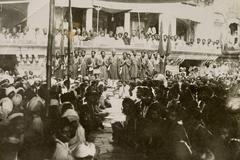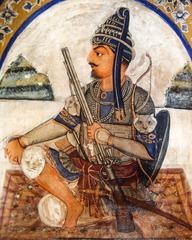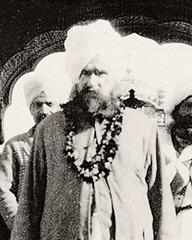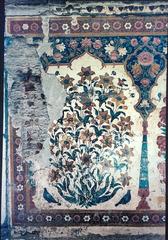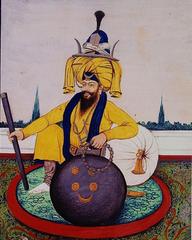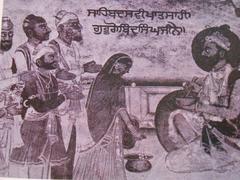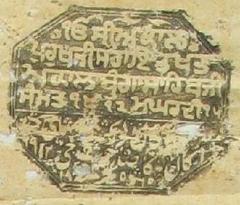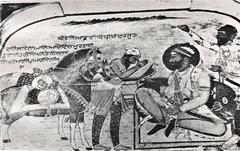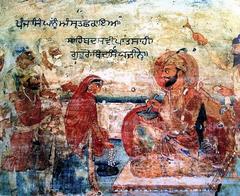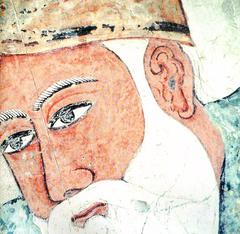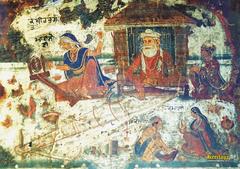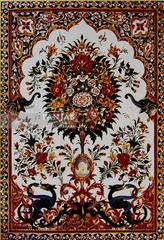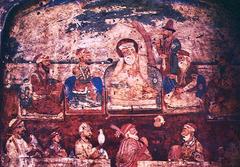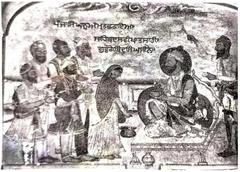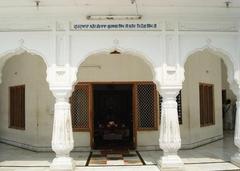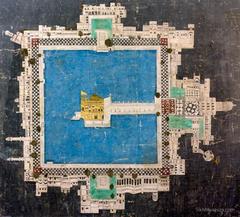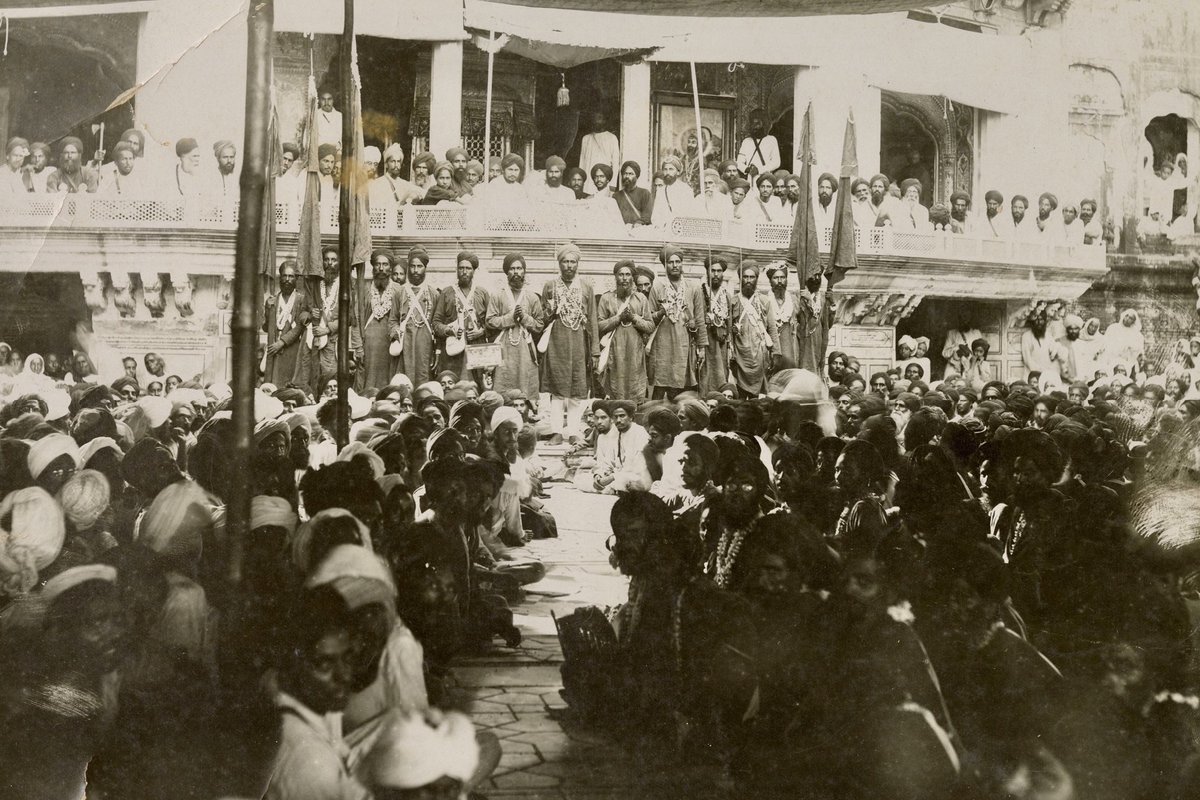
Sri Akal Takht Sahib Visiting Hours and Guide
Date: 19/07/2024
Introduction
Sri Akal Takht Sahib, located within the revered Golden Temple complex in Amritsar, India, stands as the highest temporal seat of Sikhism. This monumental site is not only a focal point for spiritual reflection but also an emblem of Sikh political sovereignty, justice, and valor. Established by Guru Hargobind Sahib Ji, the sixth Sikh Guru, in 1606, the Akal Takht symbolizes the unity of Miri (temporal power) and Piri (spiritual authority) within the Sikh faith. The term ‘Akal’ translates to ‘timeless being,’ and ‘Takht’ means ‘throne,’ collectively denoting the ‘Throne of the Timeless One.’ Over centuries, Sri Akal Takht Sahib has evolved from a modest platform to a majestic structure, adorned with intricate marble work and crowned with a gold-plated dome. It serves as a command center during battles against oppression and remains a beacon of resilience and justice for Sikhs worldwide. This guide aims to provide comprehensive information on the site’s history, architectural splendor, visitor details, and travel tips to ensure an enriching and respectful visit. (source)
Table of Contents
- [History and Significance of Sri Akal Takht Sahib](#history-and-significance-of-sri-akal-takht-sahibhistory-and-significance-of-sri-akal-takht-sahib)
- [The Founding and Early Years](#the-founding-and-early-yearsthe-founding-and-early-years)
- [A Legacy of Resistance and Resilience](#a-legacy-of-resistance-and-resiliencea-legacy-of-resistance-and-resilience)
- [The Role of Sri Akal Takht Sahib in Sikhism](#the-role-of-sri-akal-takht-sahib-in-sikhismthe-role-of-sri-akal-takht-sahib-in-sikhism)
- [Visitor Information](#visitor-informationvisitor-information)
- [Visiting Hours and Ticket Prices](#visiting-hours-and-ticket-pricesvisiting-hours-and-ticket-prices)
- [Travel Tips](#travel-tipstravel-tips)
- [Nearby Attractions](#nearby-attractionsnearby-attractions)
- [Architectural Marvel](#architectural-marvelarchitectural-marvel)
- [Architectural Evolution](#architectural-evolutionarchitectural-evolution)
- [Architectural Style](#architectural-stylearchitectural-style)
- [Key Architectural Elements](#key-architectural-elementskey-architectural-elements)
- [Artifacts of Historical and Religious Significance](#artifacts-of-historical-and-religious-significanceartifacts-of-historical-and-religious-significance)
- [Special Events and Guided Tours](#special-events-and-guided-toursspecial-events-and-guided-tours)
- [Getting There and Around](#getting-there-and-aroundgetting-there-and-around)
- [Accommodation](#accommodationaccommodation)
- [Food and Drink](#food-and-drinkfood-and-drink)
- [FAQ](#faqfaq)
- [Conclusion](#conclusionconclusion)
- [References](#referencesreferences)
History and Significance of Sri Akal Takht Sahib
The Founding and Early Years
The foundation of Sri Akal Takht Sahib was laid by Guru Hargobind Sahib Ji, the sixth Sikh Guru, in 1606. He envisioned it as a complement to the spiritual Harmandir Sahib (Golden Temple) and a center for Sikh temporal affairs. The term “Akal” refers to the timeless being, God, while “Takht” means throne. Thus, Sri Akal Takht Sahib translates to “Throne of the Timeless One.”
Guru Hargobind Sahib Ji designed the Akal Takht as a platform raised twelve feet above ground level, symbolizing the preeminence of spiritual and temporal concerns in Sikhism. He would sit on the Takht, adorned with royal attire and weaponry, to address the Sikh community and dispense justice. This act signified the inseparable nature of Miri (temporal power) and Piri (spiritual authority) in the Sikh faith.
A Legacy of Resistance and Resilience
Throughout history, Sri Akal Takht Sahib has been at the forefront of Sikh resistance against oppression and injustice. It served as a command center during various battles fought to protect the Sikh faith and its followers. The Takht became a symbol of defiance against Mughal rule, particularly during the 18th century when Sikh warriors fought for their independence.
One of the most significant events in the history of Sri Akal Takht Sahib was the installation of the Khalsa Panth in 1699 by Guru Gobind Singh Ji, the tenth Sikh Guru. This event marked the formalization of the Sikh identity and the establishment of a distinct socio-religious order.
The Role of Sri Akal Takht Sahib in Sikhism
Sri Akal Takht Sahib plays a pivotal role in Sikhism, serving as the highest seat of earthly authority for the Sikh community. It is one of the five Takhts (thrones of authority) in Sikhism, the others being:
- Takht Sri Keshgarh Sahib: Anandpur Sahib, Punjab
- Takht Sri Damdama Sahib: Talwandi Sabo, Punjab
- Takht Sri Patna Sahib: Patna, Bihar
- Takht Sri Hazur Sahib: Nanded, Maharashtra
The Akal Takht is responsible for addressing matters related to the Sikh Panth (community) as a whole. It issues edicts and pronouncements on religious, social, and political issues affecting Sikhs. These pronouncements, known as “Sandesh” or “Hukamnamas,” are considered binding by devout Sikhs.
Visitor Information
Visiting Hours and Ticket Prices
Sri Akal Takht Sahib is open to visitors 24 hours a day, all year round. There is no entry fee, and visitors are welcome to attend the daily ceremonies and prayers. However, donations are appreciated to help maintain the site.
Travel Tips
- Dress Code: Modest attire is required. Visitors must cover their heads and remove their shoes before entering the premises.
- Photography: Photography is allowed in certain areas. Be respectful and avoid using flash during religious ceremonies.
- Best Time to Visit: Early mornings and late evenings are ideal times to experience the serenity and spiritual ambiance of the Akal Takht.
Nearby Attractions
- Golden Temple: Just a few steps away, this is the holiest site in Sikhism.
- Jallianwala Bagh: A historical garden that commemorates the 1919 massacre.
- Partition Museum: Offers insights into the partition of India and Pakistan in 1947.
- Durgiana Temple: A Hindu temple with architecture similar to the Golden Temple.
Architectural Marvel
Architectural Evolution
The history of Sri Akal Takht Sahib’s architecture is as fascinating as the structure itself. It began as a simple platform, a “Takht” or throne, raised by Guru Hargobind Sahib Ji, the sixth Sikh Guru, in 1606. This platform, built five feet higher than the surrounding land, symbolized the rise of Sikhism’s temporal power alongside its spiritual authority.
Over the centuries, the structure underwent several transformations. Maharaja Ranjit Singh, the leader of the Sikh Empire, gilded the exterior with gold in 1830, giving it the resplendent look it is known for today.
Architectural Style
The architecture of Sri Akal Takht Sahib reflects a unique blend of Sikh and Mughal styles. The building, rectangular, is adorned with intricate marble work, an influence of Mughal architecture prevalent during its renovation. The floral designs and geometric patterns on the marble are a testament to the craftsmanship of that era.
The dome, a distinctive feature of Sikh architecture, crowns the structure. Unlike the onion-shaped domes of Mughal buildings, the dome of Sri Akal Takht Sahib is a rounded cupola, plated with gold, symbolizing the sun and representing radiance, enlightenment, and eternity.
Key Architectural Elements
- The Central Hall: The heart of Sri Akal Takht Sahib is its expansive central hall. This hall, where religious congregations take place, is known for its high vaulted ceiling and intricate frescoes. The Guru Granth Sahib, the holy scripture of Sikhism, is placed here during the day.
- The Darshini Deori: This archway, adorned with gold, marks the entrance to the inner sanctum of Sri Akal Takht Sahib. It serves as a visual reminder of the sanctity of the space within.
- The Nishaan Sahibs: Two towering flagpoles, called Nishaan Sahibs, stand tall on either side of the main entrance. These flags, bearing the Sikh symbol (Khanda), represent the Sikh faith’s sovereignty and are a common sight in Sikh architecture.
Artifacts of Historical and Religious Significance
Beyond its architecture, Sri Akal Takht Sahib houses several artifacts of immense historical and religious importance. These objects offer a glimpse into the rich history of Sikhism and its valiant past.
- Weapons of the Gurus: Sri Akal Takht Sahib houses a collection of weapons that belonged to the Sikh Gurus. These weapons, including swords, daggers, and shields, are not just artifacts but symbols of courage, self-defense, and the fight for justice.
- Manuscripts and Texts: The building also safeguards a collection of ancient manuscripts and historical texts related to Sikhism. These documents provide invaluable insights into the evolution of Sikh thought, philosophy, and history.
Special Events and Guided Tours
- Special Events: Sri Akal Takht Sahib hosts various religious festivals and events throughout the year, including important Sikh holidays like Vaisakhi and Gurpurab.
- Guided Tours: Guided tours are available and highly recommended for those who want to delve deeper into the history and significance of Sri Akal Takht Sahib.
Getting There and Around
- By Air: The nearest airport is Sri Guru Ram Dass Jee International Airport (ATQ) in Amritsar, well-connected to major cities in India and abroad.
- By Train: Amritsar Junction Railway Station (ASR) is a major railhead with connections to various parts of the country.
- By Road: Amritsar is well-connected by road to other cities in Punjab and neighboring states.
- Local Transport: Auto-rickshaws, cycle-rickshaws, and taxis are readily available for getting around the city.
Accommodation
Amritsar offers a wide range of accommodation options to suit different budgets, from budget guesthouses to luxury hotels. Many hotels are located within walking distance of the Golden Temple Complex.
Food and Drink
Amritsar is a culinary paradise, renowned for its rich and flavorful Punjabi cuisine. Don’t miss the opportunity to savor local delicacies like Amritsari Kulcha, Chole Bhature, and Lassi. Vegetarian food is widely available, reflecting the city’s strong Sikh heritage.
FAQ
- What are the visiting hours for Sri Akal Takht Sahib?
- Sri Akal Takht Sahib is open 24 hours a day, all year round.
- Is there an entry fee?
- There is no entry fee to visit Sri Akal Takht Sahib.
- Can I take photographs inside the shrine?
- Photography is not allowed inside the main shrine but is permitted in the outer areas.
Conclusion
Sri Akal Takht Sahib stands as a testament to the rich history, resilience, and spiritual authority of Sikhism. From its inception by Guru Hargobind Sahib Ji to its role in significant historical events, the Akal Takht has been a symbol of defiance against oppression and a beacon of justice. Today, it continues to attract millions of pilgrims and tourists who come to pay their respects and delve into the Sikh faith’s profound history and traditions. Whether you are captivated by its architectural grandeur or moved by its historical significance, a visit to Sri Akal Takht Sahib offers a unique opportunity to experience the enduring spirit of Sikhism. Remember to plan your visit thoughtfully, respecting the site’s sanctity and the practices that make it a revered place of worship. For more updates and detailed guides, download the Audiala mobile app and follow us on social media. (source)
References
- Title, 2024, Audiala (source)
